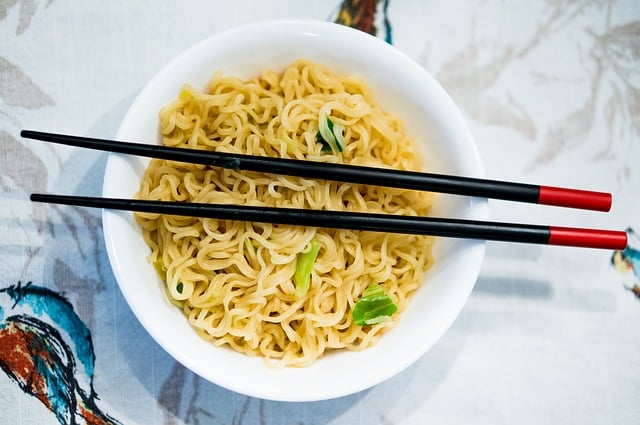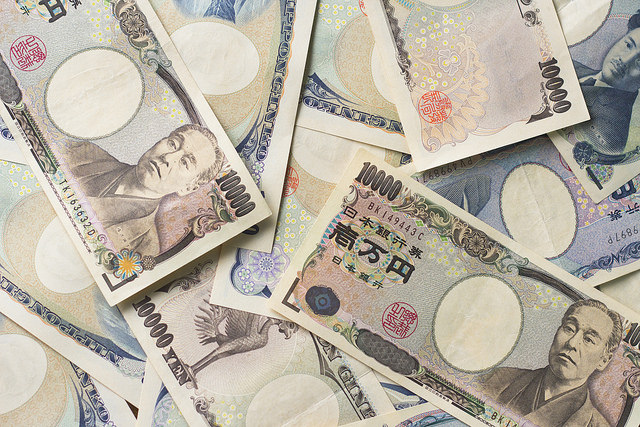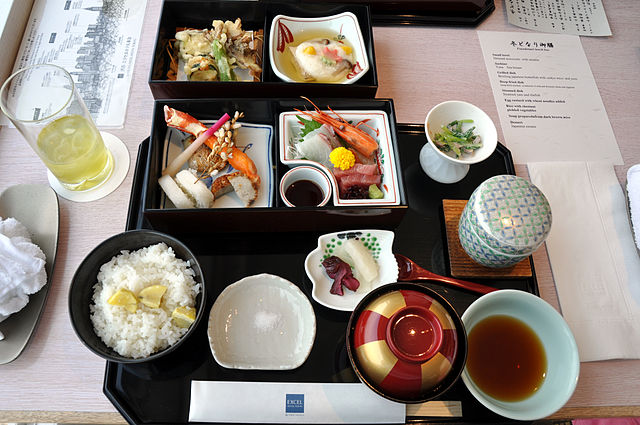Tips to Politely Navigate Your Next Meal in Japan
In a culture with quite a few rules that you may not be familiar with, the thought of dining Japanese-style may seem daunting. Never fear, as we’ve complied a list of helpful etiquette tips to get you through a Japanese meal without losing any face, and maybe even impressing your fellow diners!
Photo via Wikipedia
Show respect for your Elders and for everyone else
Let the oldest person at the table pick up their chopsticks first and start eating first during your Japanese meal. It shows that you understand that Japanese culture puts a great deal of emphasis on respecting age and seniority, and it will help you fit in at the table a bit more.
When drinking, you should never pour your own drink and you should make sure no one pours their own drink. Make it a habit to make sure the other diners have full cups and they’ll make sure your cup is never empty. Remember that this can get a bit dangerous, as it’s harder to keep track of exactly how much you’ve had to drink. Make sure you wait for all the glasses to be filled before saying “Kampai,” or ‘Cheers,’ and it’s best to wait for the oldest person at the table to take a sip of their drink first. Take it slow, pace yourself, and remember to always make sure that everyone has more than enough to drink!
Master those chopsticks!

Photo via Pixabay
You may not have had much experience with chopsticks in the past, but that’s no reason to be afraid of them. It may take a few tries to really get the hang of it, but with a little practice and a little guidance, you should be able to use chopsticks like a pro in no time! If you have the chance to pick your own chopsticks, go with wood as they’re easier to use. Often in Japan you’ll encounter plastic chopsticks or metal ones (though the metal ones are the most common in Korea), and while these aren’t incredibly difficult, they are a bit more unwieldy.
You’ll want to start by picking your chopsticks up with both hands to show respect and you’ll want to try and make it so the bottom chopstick (the one closest to your thumb) stays stationary, while the top chopstick moves back and forth with your first two fingers to guide it. It sounds easy, but it takes some practice. Be careful with slippery things, as they can often slide out of your grasp. Take your time and you’ll find yourself rewarded. Do not ‘stab’ the food with your chopsticks, no matter how difficult the dish is- it’s a huge Japanese faux pas.
It’s considered incredibly rude to point at anything with your chopsticks; the food, another person at the table, yourself, anything. Even worse is passing food with chopsticks, as this is reminiscent of Japanese funeral rites, where bones are passed with chopsticks. Another funeral practice in Japan involves placing a pair of chopsticks upright in a bowl of rice as an offering- so you definitely shouldn’t do that either. There will be a place for you to rest your chopsticks next to your plate- called a hashioki (箸置き), so look out for it.
Make a decision
When wracked with indecision over which delicious side dish you should munch on, do not hover your chopsticks over a dish! Mayoibashi (迷い箸), or ‘hesitating chopsticks’ is considered to be terribly rude, as is sorabashi (空箸)- the action of touching food with your chopsticks but not taking any.
Say the right thing
Begin your meal by saying ‘Itadaki-masu,’ which means, ‘I humbly receive.’ Finish your meal by saying ‘Gochisosama- deshita’ or ‘Gochisosama’ to say thank you (formally and slightly less formally). You can also show your appreciation for ramen or any other soup by slurping as you drink it. Don’t be afraid of bringing the bowl to your lips to drink from either, as the slurping sounds and drinking from the bowl (no chopsticks in hand folks!) are considered completely appropriate.

Photo via Flickr
Taking care of the cheque
Tipping is unheard of in Japan and can be considered rude by non-Western restaurants, so keep your tip for an aperitif or desserts later on in the evening. Usually the eldest member of the table (or the person with the most seniority, like an employer) will pay for the meal in order to save or maintain face. If happen to be the oldest sucker there, or if you’re paying for the meal for any reason at all, put your cash or card in the small tray allocated for payment- it should be near the cash register. If you can’t find a small tray, then make sure you hand your payment over with both hands (and you receive any change or the card with both hands as well) to show respect.
Hopefully this helpful starter guide will help you to successfully navigate your Japanese dining experience. Remember that a bashful smile often goes a long way in terms of making mistakes, and often people are simply happy and impressed that you’ve tried and put in the effort.



